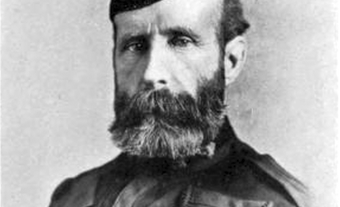
Émile Jean-Baptiste Marie Grouard
Émile Jean-Baptiste Marie Grouard, priest, bishop and titular archbishop (b at Brulon, France 2 February 1840; d at Grouard 7 March 1931). One of the most influential clerics in northern Alberta, Émile Grouard went to Québec in 1860 to study at Laval University. He was ordained a priest in 1862 in the Congregation of the Oblates of Mary Immaculate and for the next 29 years, saw service at Fort Chipewyan, Fort Providence, Lac La Biche, Dunvegan, Lac La Biche and Fort Chipewyan. In 1890, while still a priest at Fort Chipewyan, he was appointed the vicar apostolic of Athabasca-Mackenzie and titular bishop of Ibora. The following year he was ordained bishop of the new diocese of Athabasca. In 1902 the diocesan headquarters was transferred to St Bernard's Mission at the west end of Lesser Slave Lake (Buffalo Bay). Here Grouard remained until his death, having become vicar apostolic of Athabasca in 1910. Upon his retirement in 1929, Monseigneur Grouard had the honorary titles bestowed upon him of titular archbishop of Aegina and vicar apostolic emeritus of Grouard. Like the community 10 km to the south of St Bernard's (see Grouard), the new diocese was named after him.
Monseigneur Émile Grouard was energetic and inventive, having steamboats built on the Peace, Slave and Athabasca rivers. He was also respected by the Indigenous peoples of his diocese, and came to learn the Cree, Denesuline (Chipewyan) and Dane-zaa (Beaver) languages. In 1877 he acquired a printing press on which he produced several religious texts and hymns in those languages. His influence was felt during the negotiations for Treaty 8 in 1899, when he advised the First Nations of Lesser Slave Lake to accept its terms. Grouard was also an artist. Some of his murals can be seen in St Bernard's Mission, while his murals in the St Charles Mission at Dunvegan (see Historic Dunvegan) have been skilfully replicated.

 Share on Facebook
Share on Facebook Share on X
Share on X Share by Email
Share by Email Share on Google Classroom
Share on Google Classroom
